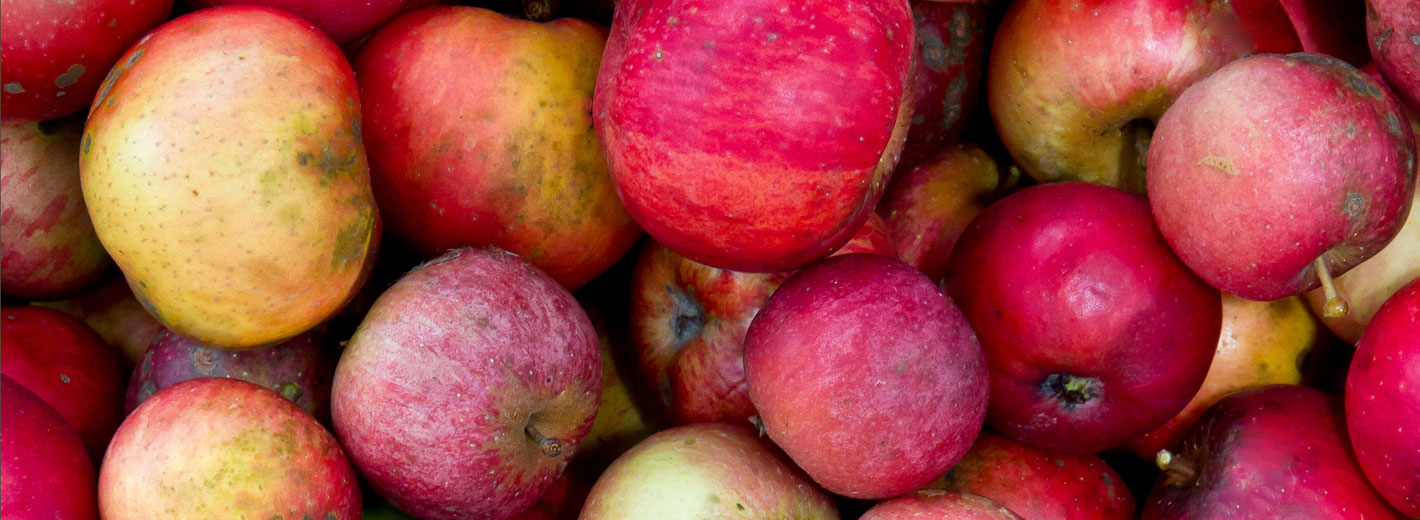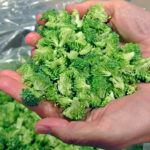
Imperfectly Delicious Produce
A cutting-edge program to rescue flavorful but cosmetically imperfect produce from going to waste on farms and during distribution
Visit any abundant growing region, such as California’s San Joaquin Valley, and you may see entire fields of perfectly good fruits, vegetables, or greens getting disked under, returned to the soil rather than picked. Over 40% of the edible food in the United States goes to waste each year, both pre- and post-consumer; a large portion of that waste happens before the food even reaches our plates.
Vast amounts of produce go unharvested, left in the fields because they don’t meet stringent cosmetic standards for shape, size, and color. Other items might fail to make the cut for Grade A product standards later, and either get sold through secondary markets as “seconds” or simply tossed. And finally, there are parts of vegetables that get wasted because they are deemed undesirable or unsellable, when in fact they are fine to eat and could be incorporated into dishes with a little creativity. All of these possibilities can be financially damaging to the farmer.
Wasted food is also an environmental disaster. When we waste food, we waste all the resources — the water, oil, chemicals, land, and labor — that went into growing and processing it. Food in landfills decomposes and emits methane, the greenhouse gas that’s 20 to 25 times more powerful than carbon dioxide.
That’s why in May 2014 Bon Appétit launched a groundbreaking pilot program to work with our farmers, distributors, and chefs to save this cosmetically challenged produce from going to waste. Food service operations use produce in many different ways, and visual perfection is necessary for only a small percentage of them. Size and appearance matter little; flavor matters the most. Through the Imperfectly Delicious Produce program, we’ve engaged our distributors, farmers, and chefs to identify opportunities to rescue produce from going to waste on a regular basis. We work with:
- our farmers, small and large, to identify produce that can be rescued,
- our distributors, to set up the systems for purchasing and transporting the produce to our cafés,
- our chefs, to find creative ways to incorporate the produce into menus.
Through the Imperfectly Delicious Produce program, we are able to prevent waste in the supply chain and reduce the negative impact it has on our environment while putting money back in the pockets of farmers who need it most. In 2016 alone, we saved 2 million pounds of cosmetically challenged and underappreciated fruits and vegetables, such as:
- “Clipped” or “second cut” spinach, baby kale, and baby chard: These second-harvest greens represent a whopping 50 percent reduction in water usage. (Greens don’t all grow at the same pace. A machine harvest may clip the top of shorter leaves that could be harvested on a second pass, so most farmers don’t bother. Give them a market for those leaves and they will, though.)
 Broccoli “fines”: The small florets left over in processing when the big heads are broken into retail-sized bags. They’re usually thrown away, but they’re great for stir fries and quiches, and another revenue stream for farms.
Broccoli “fines”: The small florets left over in processing when the big heads are broken into retail-sized bags. They’re usually thrown away, but they’re great for stir fries and quiches, and another revenue stream for farms.- Cauliflower oddballs: Giving a home to the smaller- or larger-than-average heads or ones with weather-related blemishes can mean a 20 to 40 percent increase in harvest yield for cauliflower farmers.
- Romaine leaves: The craze for “hearts of romaine” has left the outer leaves in the dust, literally. Buying some of what would otherwise be disked under can translate into a 10 to 15 percent increase in crop yield for romaine farmers and less water used per pound of romaine harvested.
Learn more about how Bon Appétit is fighting food waste >
Learn more about food waste in Wasted: How America Is Losing Up to 40 Percent of Its Food from Farm to Fork to Landfill (PDF), by Dana Gunders, Natural Resources Defense Council: